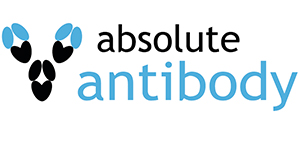Anti-Deoxynivalenol (AbDON01)
Anti-Deoxynivalenol [AbDON01], Recombinant, IgG1 lambda, Mouse
SKU
ABAAb02933-1.1-BT
Packaging Unit
1 mg
Manufacturer
Absolute Antibody
Availability:
loading...
Price is loading...
CloneID: AbDON01
Antigen Long Description: The original antibody was generated by cloning the variable light and heavy chain genes of the anti-DOM hybridoma were assembled into the scFv gene using a linker sequence (Gly4Ser)3 by over-lapping PCR. PCR amplified products were purified, treated with SfiI and NotI and cloned into phagemid expression pDisplay-2TM . The plasmid was used to transform E.coli HB2151 host cells and the soluble scFv was generated.
Buffer Composition: PBS only.
Chimeric Use Statement: This reformatted mouse antibody was made using the variable domain sequences of the original Mouse Fab format for improved compatibility with existing reagents assays and techniques.
Specificity Statement: This antibody is specific for mycotoxin deoxynivalenol (DON). This antibody also shows reactivity with other trichothecene mycotoxins like 15-AC-deoxynivalenol, HT-2 toxin, T-2 triol, nivalenol (NIV) and T-2 toxin/tri-acetyl-DON (Tri-Ac-DON) but it does not react with 3-acetyl-deoxynivalenol (3-Ac-DON), Fusarenone-X (FX), trichothecin, diacetoxyscirpenol (DAS), roridin A, and verrucarol. . Deoxynivalenol belongs to the trichothecene class of mycotoxins, generated by several Fusarium fungi. Deoxynivalenol (DON), along with 3-acetyl-deoxynivalenol (3-ADON) and 15-acetyldeoxynivalenol (15-ADON), occur in grains and cereal products and is often hazardous to humans and livestock. Biochemically, deoxynivalenol is an inhibitor of protein synthesis and has hemolytic activity, causing apoptosis (cytotoxicity) and immunotoxicity to eukaryotic organisms. In animals, deoxynivalenol can cause anorexia and vomiting (PMID: 8896360; 16420629), and it can also cause human skin irritation, hemorrhaging, hematological changes, lymphocyte blastogenesis impairment, radiomimetic effects and apoptosis (PMID: 8896360; 16326049). In plants, deoxynivalenol is a virulence factor in the pathogenesis of G. zeae on wheat (PMID: 16420629).
Application Notes (Clone): The binding characterization of the scFv antibody and the whole IgG1 antibody was done using non-competitive indirect ELISA. To check the cross reactivity of the scFv version and whole IgG version with other members of trichothecene mycotoxins, competitive direct ELISA and biolayer interferometry (BLI) was used (Maragos et al., 2012).
Antigen Long Description: The original antibody was generated by cloning the variable light and heavy chain genes of the anti-DOM hybridoma were assembled into the scFv gene using a linker sequence (Gly4Ser)3 by over-lapping PCR. PCR amplified products were purified, treated with SfiI and NotI and cloned into phagemid expression pDisplay-2TM . The plasmid was used to transform E.coli HB2151 host cells and the soluble scFv was generated.
Buffer Composition: PBS only.
Chimeric Use Statement: This reformatted mouse antibody was made using the variable domain sequences of the original Mouse Fab format for improved compatibility with existing reagents assays and techniques.
Specificity Statement: This antibody is specific for mycotoxin deoxynivalenol (DON). This antibody also shows reactivity with other trichothecene mycotoxins like 15-AC-deoxynivalenol, HT-2 toxin, T-2 triol, nivalenol (NIV) and T-2 toxin/tri-acetyl-DON (Tri-Ac-DON) but it does not react with 3-acetyl-deoxynivalenol (3-Ac-DON), Fusarenone-X (FX), trichothecin, diacetoxyscirpenol (DAS), roridin A, and verrucarol. . Deoxynivalenol belongs to the trichothecene class of mycotoxins, generated by several Fusarium fungi. Deoxynivalenol (DON), along with 3-acetyl-deoxynivalenol (3-ADON) and 15-acetyldeoxynivalenol (15-ADON), occur in grains and cereal products and is often hazardous to humans and livestock. Biochemically, deoxynivalenol is an inhibitor of protein synthesis and has hemolytic activity, causing apoptosis (cytotoxicity) and immunotoxicity to eukaryotic organisms. In animals, deoxynivalenol can cause anorexia and vomiting (PMID: 8896360; 16420629), and it can also cause human skin irritation, hemorrhaging, hematological changes, lymphocyte blastogenesis impairment, radiomimetic effects and apoptosis (PMID: 8896360; 16326049). In plants, deoxynivalenol is a virulence factor in the pathogenesis of G. zeae on wheat (PMID: 16420629).
Application Notes (Clone): The binding characterization of the scFv antibody and the whole IgG1 antibody was done using non-competitive indirect ELISA. To check the cross reactivity of the scFv version and whole IgG version with other members of trichothecene mycotoxins, competitive direct ELISA and biolayer interferometry (BLI) was used (Maragos et al., 2012).
| SKU | ABAAb02933-1.1-BT |
|---|---|
| Manufacturer | Absolute Antibody |
| Manufacturer SKU | Ab02933-1.1-BT |
| Package Unit | 1 mg |
| Quantity Unit | STK |
| Reactivity | Various species |
| Clonality | Recombinant |
| Application | ELISA |
| Isotype | IgG1 lambda |
| Host | Mouse |
| Product information (PDF) |
|
| MSDS (PDF) | Download |

 Deutsch
Deutsch







